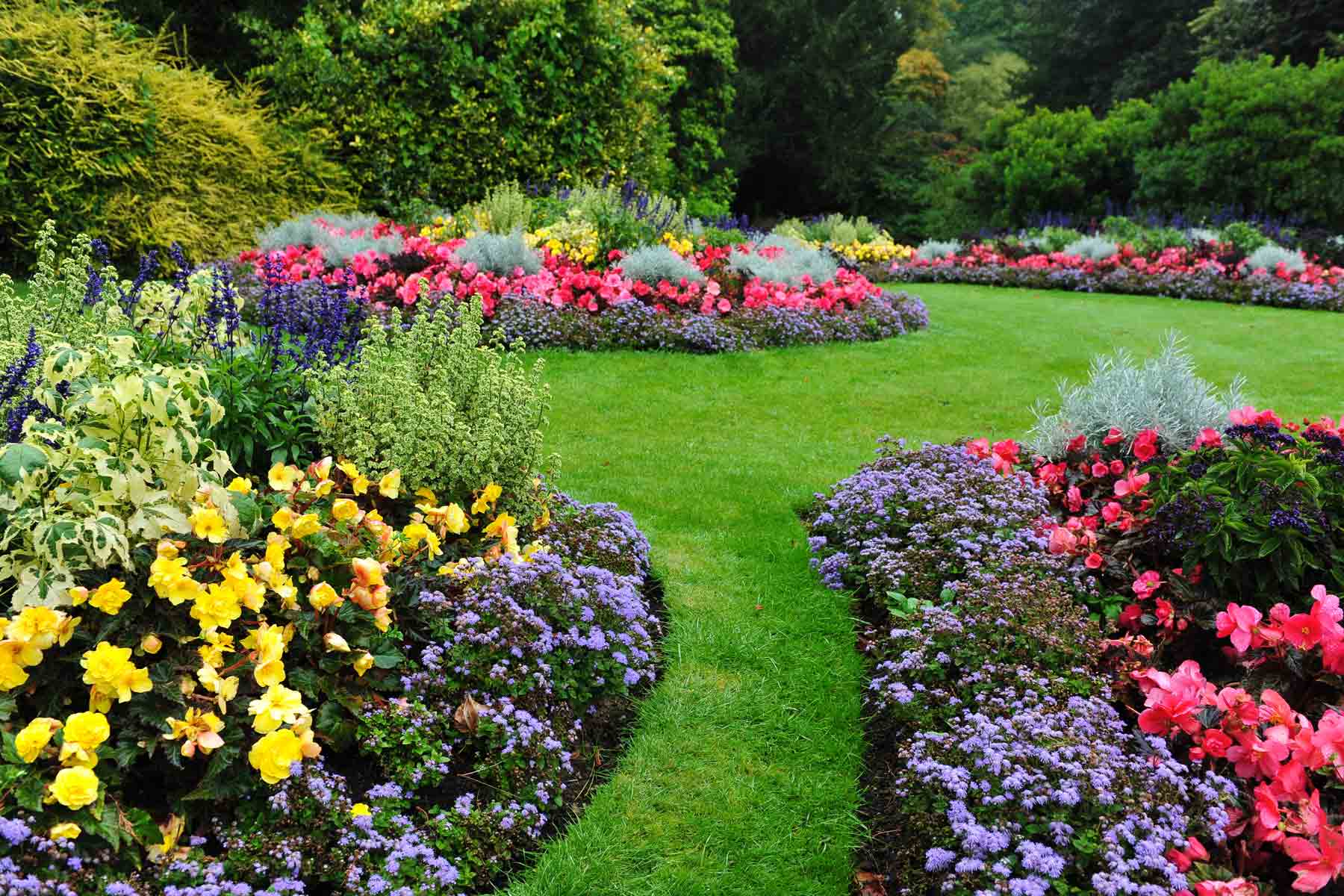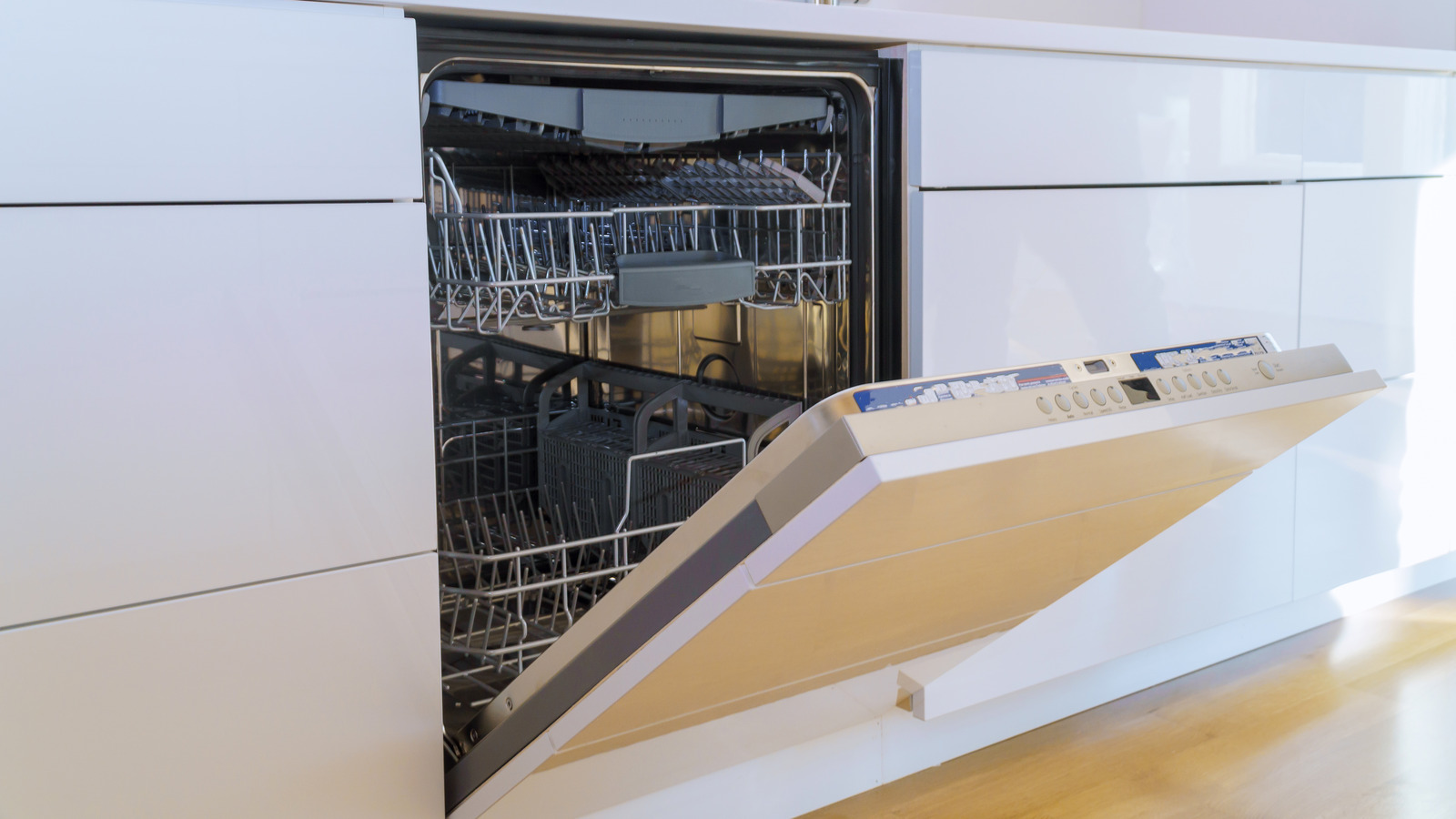Home>Garden Essentials>How Much Does Backyard Landscaping Cost


Garden Essentials
How Much Does Backyard Landscaping Cost
Modified: August 27, 2024
Discover the average cost of backyard landscaping and garden design. Get expert tips and ideas for creating your dream outdoor space within your budget.
(Many of the links in this article redirect to a specific reviewed product. Your purchase of these products through affiliate links helps to generate commission for Storables.com, at no extra cost. Learn more)
Introduction
Creating a beautiful backyard space is a dream for many homeowners. It’s a place where you can relax, entertain guests, and enjoy the beauty of nature. However, one major factor that often comes into play when considering backyard landscaping is the cost involved. From plants and hardscape materials to labor and design fees, the expenses can quickly add up.
In this article, we will explore the various factors that affect backyard landscaping cost and provide you with a comprehensive understanding of what to expect when planning your own outdoor oasis.
When it comes to budgeting for backyard landscaping, it’s important to consider factors such as the size of your backyard, the complexity of the design, the materials you choose, and whether you plan to hire professionals or tackle the project yourself.
Another important consideration is the geographical location of your property. The cost of materials and labor can vary significantly depending on where you live. For example, landscaping expenses tend to be higher in urban areas compared to rural areas.
Additionally, it’s crucial to keep in mind that landscaping costs can be influenced by the current market conditions, such as inflation, availability of materials, and the demand for professional services.
While there is no straightforward answer to the question of how much a backyard landscaping project will cost, having a clear understanding of the various components involved can help you estimate a realistic budget.
Whether you’re planning a complete backyard makeover or simply looking to enhance the existing space, understanding the factors that affect landscaping cost is the first step towards creating your ideal outdoor retreat.
Key Takeaways:
- Backyard landscaping costs vary based on factors like yard size, design complexity, materials, and labor. Planning and prioritizing can help create a beautiful space within budget.
- Consider DIY landscaping for cost savings, but be realistic about skills and time commitment. Professional help can ensure efficiency and high-quality results.
Read more: How Much Does It Cost For Landscaping
Factors Affecting Backyard Landscaping Cost
When it comes to determining the cost of backyard landscaping, several key factors come into play. Understanding these factors will help you assess the potential expenses involved and make informed decisions about your project. Here are some of the main factors that can influence the cost of your backyard landscaping:
- Size of the Backyard: The size of your backyard is a significant factor that affects the cost of landscaping. Larger yards require more materials, plants, and labor, which can increase the overall expenses. Additionally, designing and creating a cohesive and functional landscape for a larger space may require more intricate planning and execution.
- Design Complexity: The complexity of your landscaping design can impact the cost. Intricate designs that involve features like waterfalls, ponds, or intricate hardscape elements will require specialized skills and materials, which can increase the overall cost of the project.
- Materials: The materials you choose for your landscaping project can greatly impact the cost. From plants and trees to pavers and mulch, the prices of materials can vary significantly. Opting for high-end or rare plants, exotic stones, or premium hardscape materials can drive up the project’s expenses.
- Labour: The cost of labor is a significant factor in backyard landscaping. Hiring skilled and experienced professionals to design and execute the project can come with a higher price tag. The complexity of the work, the number of laborers required, and the duration of the project will all contribute to the overall labor cost.
- Site Accessibility: The accessibility of your backyard can affect the cost. If the area is difficult to reach or requires special equipment, the cost may increase due to additional time and effort required by the professionals.
- Permits and Regulations: Depending on your location, there may be permits and zoning regulations that need to be followed for landscaping projects. Obtaining the necessary permits and complying with regulations can add to the overall cost.
- Seasonality: The time of year can also impact the cost of your backyard landscaping project. Prices for materials, labor, and services may fluctuate depending on the season. Some plants or materials may be more expensive or harder to find during certain months.
It’s important to consider all these factors when planning your backyard landscaping project. By understanding how each element contributes to the overall cost, you can make informed decisions and create a budget that aligns with your vision and financial resources.
Average Cost of Backyard Landscaping
The cost of backyard landscaping can vary widely depending on the size of your yard, the design complexity, the materials used, and other factors. However, having a general idea of the average costs associated with backyard landscaping can help you establish a budget and determine the feasibility of your project.
On average, homeowners can expect to spend anywhere from $5,000 to $20,000 or more on their backyard landscaping. This estimate includes the cost of materials, labor, and design fees.
For smaller yards with basic landscaping needs, the cost can range from $5,000 to $10,000. This typically includes the installation of plants, mulch or gravel, and basic hardscape features like a patio or walkway.
For medium-sized yards with more intricate designs and features, the cost can range from $10,000 to $15,000. This may include the addition of water features, fire pits, outdoor lighting, and more extensive hardscaping.
For larger yards or those with high-end designs and premium materials, the cost can exceed $20,000. These projects often involve the installation of custom-built structures, luxurious outdoor kitchens, multiple seating areas, and elaborate landscaping elements.
It’s important to note that these figures are just averages, and the actual cost can vary significantly based on your specific requirements and location. The cost of materials and labor can also fluctuate over time due to market conditions.
In addition to these initial costs, it’s essential to consider the long-term maintenance expenses that come with maintaining a landscaped backyard. Regular upkeep, such as mowing, pruning, fertilizing, and irrigation, can add to the overall cost of owning a landscaped yard. It’s crucial to factor in these ongoing expenses when planning your landscaping budget.
To get a more accurate idea of the cost of your backyard landscaping project, it’s recommended to consult with professional landscapers in your area. They can provide you with a detailed estimate based on your specific needs and preferences.
Remember, investing in your backyard can significantly enhance your property’s value and your overall enjoyment of the space. By carefully planning and budgeting for your project, you can create a beautiful outdoor oasis that fits your vision and budget.
Cost Breakdown of Backyard Landscaping Components
When determining the cost of your backyard landscaping project, it’s essential to understand the breakdown of the expenses for each component. By knowing the approximate costs of different elements, you can better allocate your budget and make informed decisions about where to prioritize your spending. Here is a breakdown of the key components of backyard landscaping and their associated costs:
- Plants: The cost of plants can vary depending on the type, size, and rarity. Common plants such as shrubs and flowers can range from $5 to $50 per plant, while larger trees can cost several hundred dollars or more. For a medium-sized backyard, plan to budget around $500 to $2,000 for plant materials.
- Hardscape Materials: Hardscape materials include items such as pavers, stones, and decking materials. The cost will depend on the type and quality of the material. For example, basic pavers may cost around $5 to $10 per square foot, while higher-end materials like natural stone can range from $20 to $50 per square foot. The total cost of hardscape materials will depend on the size and complexity of your project.
- Outdoor Structures: If you plan to incorporate structures such as pergolas, gazebos, or outdoor kitchens into your backyard, you can expect to spend a significant portion of your budget on these features. Costs will vary depending on the size, complexity, and materials used. Simple pergolas can start around $2,000, while more elaborate structures can cost upwards of $10,000 or more.
- Irrigation System: Installing an irrigation system is essential for maintaining a healthy and thriving landscape. The cost will depend on the size of your yard and the complexity of the system. On average, homeowners can expect to spend between $2,500 and $4,000 for a professionally installed irrigation system.
- Lighting: Outdoor lighting can enhance the ambiance and functionality of your backyard. The cost of lighting will depend on the type of fixtures, the number of lights, and the complexity of the installation. Plan to budget anywhere from $500 to $2,000 for lighting a medium-sized backyard.
- Miscellaneous Expenses: In addition to the main components, there may be other miscellaneous expenses to consider, such as soil, mulch, edging, and professional design fees. These costs can vary depending on your specific needs and preferences. Allocate an additional 10-15% of your budget for these miscellaneous expenses.
It’s important to note that these cost estimates are just guidelines, and the actual prices may vary depending on your location and other factors. It’s always a good idea to obtain multiple quotes from reputable contractors to get a more accurate estimation based on your unique project requirements.
By breaking down the costs of different components, you can plan your backyard landscaping project more effectively and ensure that you allocate your budget wisely.
Get multiple quotes from different landscaping companies to compare prices. Consider the size of your backyard, the materials you want to use, and the complexity of the design when getting estimates.
DIY vs Hiring a Professional: Cost Comparison
One of the important decisions you’ll need to make when embarking on a backyard landscaping project is whether to tackle it yourself or hire a professional. Both options have their benefits and drawbacks, and understanding the cost implications can help you make an informed decision. Let’s compare the costs of DIY landscaping versus hiring a professional:
DIY Landscaping:
One of the main advantages of DIY landscaping is the potential for cost savings. By doing the work yourself, you can eliminate labor costs. However, it’s important to consider that DIY projects can still incur expenses, such as the cost of materials, tools, and equipment rentals.
When it comes to materials, buying in bulk can often be more cost-effective than purchasing small quantities. However, keep in mind that you may not have access to wholesale pricing that professionals can secure. Additionally, if you’re not experienced in landscaping, you may end up purchasing more materials than needed or making mistakes that can be costly to correct.
While DIY landscaping can be a more affordable option, it’s crucial to consider the time and effort involved. Landscaping projects can be time-consuming, especially if you’re not familiar with the processes involved. You’ll need to allocate significant time for planning, researching techniques, and executing the project. This may impact other commitments or projects you have on your plate.
Hiring a Professional:
Bringing in a professional landscaper offers several advantages. Firstly, their expertise and experience can ensure that the work is done efficiently and to a high standard. They have the knowledge to design a functional and aesthetically pleasing landscape that suits your specific needs and desires.
While hiring a professional comes with a cost, there are potential cost savings to be considered. Professionals have access to industry discounts on materials and equipment, which can help bring down the overall expenses. They also have the skills and experience to avoid costly mistakes that can occur during DIY projects.
The cost of hiring a professional landscaper can vary depending on the scope and complexity of your project. Generally, you can expect to pay between 10% and 25% of the total project cost as their fee. This fee covers their time, expertise, project management, and overseeing the work from start to finish.
By hiring a professional, you also save valuable time and effort. They will handle all aspects of the project, from initial design to sourcing materials, to executing the work. This allows you to focus on other priorities and enjoy the finished result without the stress and labor involved.
Ultimately, the decision between DIY landscaping and hiring a professional depends on your budget, time availability, and level of expertise. If you have the necessary skills and enjoy hands-on projects, a DIY approach may be suitable. However, for complex designs or large-scale projects, hiring a professional can provide the expertise, efficiency, and peace of mind you need.
It’s recommended to consult with professionals and obtain quotes to compare the costs and weigh them against your own skills and availability. This way, you can make an informed decision that best suits your budget and landscaping goals.
Read more: How Much Does A Backyard Renovation Cost
Ways to Save Money on Backyard Landscaping
Landscaping your backyard doesn’t have to break the bank. With careful planning and smart choices, it is possible to create a beautiful outdoor space while staying within your budget. Here are several ways to save money on backyard landscaping:
1. Plan and Design: Before diving into your landscaping project, take the time to plan and design your backyard. Create a detailed layout and consider the functionality and flow of the space. A well-thought-out plan will help prevent costly design changes down the line.
2. Do It Yourself (DIY): Consider taking on some or all of the landscaping work yourself. DIY projects can significantly reduce labor costs. However, be realistic about your skills and capabilities. It’s essential to know when to seek professional help for certain tasks, such as electrical work or heavy machinery operation.
3. Prioritize: Determine your must-haves and prioritize your landscaping features. Focus on elements that are essential to your vision and allocate your budget accordingly. By identifying your priorities, you can avoid overspending on non-essential items.
4. Use Native Plants: Incorporate native plants into your landscape design. Native plants are well-adapted to the local climate and require less maintenance and irrigation. They are also generally more affordable than exotic or non-native species.
5. Opt for Low-Maintenance Options: Choose low-maintenance materials and features that require minimal upkeep. For example, opt for gravel or mulch instead of a grass lawn, or select durable and long-lasting hardscape materials that don’t require frequent repairs or replacements.
6. Reuse and Recycle: Look for opportunities to repurpose or recycle materials in your backyard landscaping. For example, you can use reclaimed wood for building structures or create garden bed borders using recycled bricks or stones. Reusing materials not only saves money but also contributes to a more environmentally friendly landscape.
7. Shop Smart for Materials: Compare prices and shop around for the best deals on materials. Look for sales, discounts, or seasonal promotions. Consider shopping at local nurseries or wholesalers instead of big-box stores. Buying in bulk can often lead to cost savings, especially for larger projects.
8. Propagate and Share Plants: Instead of purchasing new plants, consider propagating and sharing plants with friends, family, or neighbors. Divide existing plants or take cuttings to start new ones. This way, you can expand your plant collection without spending extra money.
9. DIY Project Phases: Break down your landscaping project into phases and tackle one portion at a time. This allows you to spread out the expenses over a longer period and gives you time to allocate funds accordingly. It’s also a more manageable approach if you’re doing the work yourself.
10. Regular Maintenance: Stay on top of regular maintenance tasks to prevent larger and costlier issues down the line. Regularly mow the lawn, prune plants, and clean up debris. By maintaining your landscape, you can avoid costly repairs and replacements.
Remember, saving money on backyard landscaping doesn’t mean compromising on the quality or beauty of your outdoor space. With these cost-saving strategies, you can create a stunning landscape that fits your budget and enhances your enjoyment of your backyard.
Conclusion
Creating a beautiful backyard landscape is an exciting project that can transform your outdoor space into a personal oasis. However, it’s important to carefully consider the costs involved and make informed decisions to stay within your budget. By understanding the factors that affect backyard landscaping costs, you can plan effectively and allocate your resources wisely.
Factors such as the size of your yard, design complexity, choice of materials, labor, and location all play a role in determining the overall cost of your project. By considering these factors and creating a detailed budget, you can avoid surprises and ensure that your vision aligns with your financial resources.
Whether you decide to take a DIY approach or hire a professional landscaper, there are ways to save money without compromising on the outcome. Planning and design, prioritizing features, using native and low-maintenance plants, shopping smart for materials, and reusing/recycling are all valuable strategies to keep costs down.
Remember, landscaping is not just an upfront investment. It requires ongoing maintenance to keep your outdoor space looking its best. Regular upkeep and proactive care can help prevent larger expenses in the future.
Ultimately, creating a beautiful backyard landscape is a personalized journey. It should reflect your unique style and preferences while seamlessly integrating with your lifestyle. By taking the time to plan, budget, and make thoughtful choices, you can create a backyard retreat that brings you joy and enhances the value of your property.
So, whether you’re dreaming of a lush garden, a serene patio, or a functional outdoor living space, take the leap and embark on your backyard landscaping journey. With the right knowledge and careful consideration, you can bring your vision to life and create an outdoor space that becomes a haven for relaxation, socializing, and connecting with nature.
Frequently Asked Questions about How Much Does Backyard Landscaping Cost
Was this page helpful?
At Storables.com, we guarantee accurate and reliable information. Our content, validated by Expert Board Contributors, is crafted following stringent Editorial Policies. We're committed to providing you with well-researched, expert-backed insights for all your informational needs.















0 thoughts on “How Much Does Backyard Landscaping Cost”